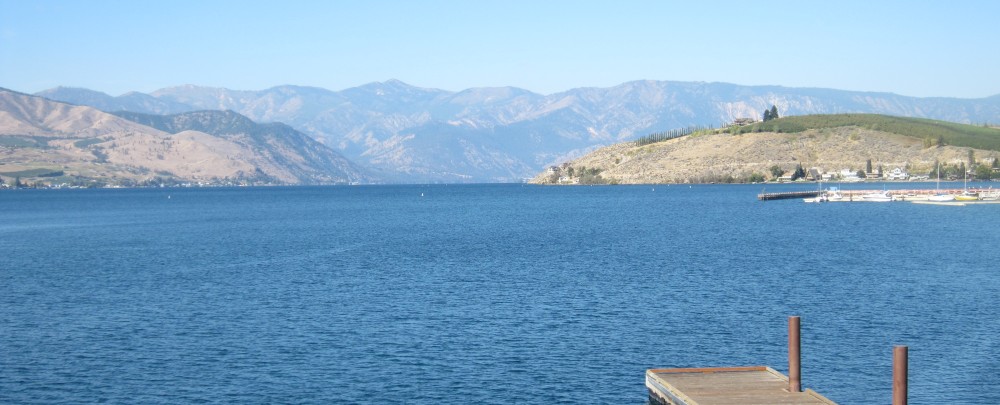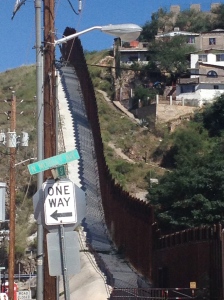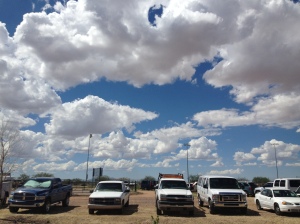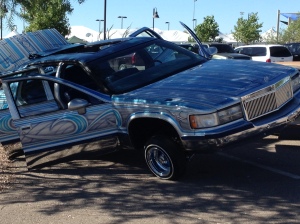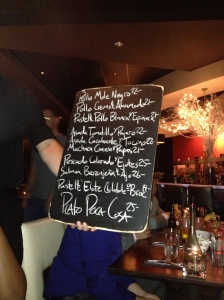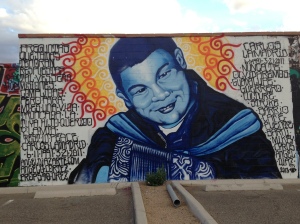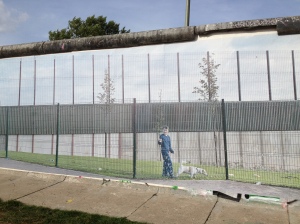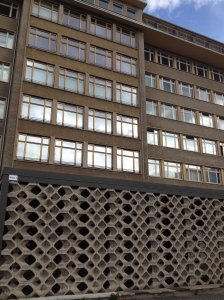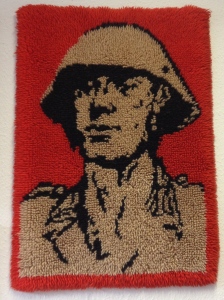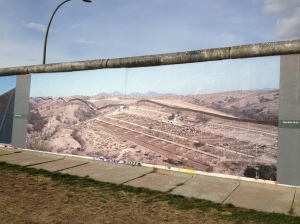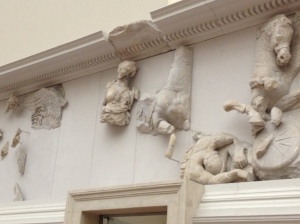The first time I saw the sky in the southwest, I was stunned. Buildings and trees hug the earth, and the light is clear and bright, so the sky is broader and bigger. The earth is tan or red in places, and the cacti, mesquite trees, and scrub brush only add to the otherworldly look of the place. Tucson is a small, affordable, and manageable city in the Sonoran desert, whose population increases in September because of the arrival of students (about 50,000 young people) and soon after, the snow birds from the east coast (about 20,000 seniors). Roughly half of the people in this progressive and arty town are Chicano, so it also has a good Mexican vibe.
We ventured south to Nogales, Arizona as part of the conference. The border fence cuts Nogales, Arizona and Nogales, Sonora (Mexico) in half. We learned about water issues and militarization in the border region. Starting salary for a border patrol guard is $50,000, so it definitely seems like a way out for people who would otherwise be stuck in retail or food service jobs.
We stayed an extra day after a conference to do some sightseeing, and a local activist and friend suggested Pasqua Yaqui pride. The tribe fought long and hard against conquest and became known as fierce warriors. Shockingly, the Pasqua Yaqui were only legally recognized by the US government about thirty years ago, so the attendant advantages of tribal recognition (land, financial resources, access), are relatively recent. Pride day included lots of traditional dancing and music, food, vendors, resource tables, and a souped up car show on the reservation. It was a lovely celebration of solidarity, tradition, fun, and a sobering reminder of our nation’s history.
There is no shortage of delicous Sonoran food in Tucson. One evening, we went to La Indita, a casual, family run place which serves indigenous Tohono O’Odham and traditional Mexican food. The homestyle guacamole, the Tohono O’Odham style beef with red chile, and calabacitas were delicious. The flan was very sweet and perfectly creamy, not curdled and overbaked like so many places do. Another evening, Cafe Poca Cosa, with its rotating selection of Mexican dishes in an upscale setting, truly dazzled. We shared the plato poca cosa after noting the portion sizes at an adjacent table. On that night, the sampler included a rich chicken mole, a layered creamy broccoli dish, and a spicy beef dish. There were rich beans and pillowy corn tortillas on the side.
Another evening, we had a margarita at a local favorite on Congress. And, in true city as small town fashion, we ran into our host at Cafe Passe, a good coffee shop with a huge outdoor patio in the back, on the popular 4th Avenue. Around the block is a mural to a young Mexican American who was gunned down by border patrol.
And of course, I loaded up on southwestern staples at Native Seed/SEARCH. This store sells seeds and food products. It’s a bit on the pricy side, so some locals balk at the idea of shopping here, but living on the east coast, I can’t easily access many of these items. I stocked up on prickly pear cactus candy, mormon tea (for allergies), blue posole, bolita beans (hands down makes the best refried beans), corn snacks, and Ga’ivsa, cracked roasted Pima corn. Chiltepins were sold out, likely due to an article in the current issue of Edible Baja Arizona. All the more reason to return soon.
